The French biologist Anne Peyroche used to be for a very short time the interim president of the biggest research institute network in Europe, CNRS, after its previous gray eminence, Alain Fuchs, retired in October 2017. Immediately after Peyroche was appointed, my readers flooded PubPeer with evidence of fraud in her papers, which I then reported on my site. The interim CNRS president was swiftly deposed from her position in early 2018 and replaced by the tough-talking Antoine Petit, while an investigation by Peyroche’s official employer, the French Atomic Energy Commission (CEA), began.
CEA commissioned an analysis from the French Academy of Sciences, the final report was leaked to the French journalist Anne Jouan, who published it in l’Express in October 2018. I based my own article on it, and in brief: clear evidence of research fraud as found in Peyroche papers, including the highest Grade IV of data manipulation. 3 retractions were recommended. The only question remaining was whodunnit, because Peyroche herself could not be heard, as she is departed on a sick leave soon after the affair started in October 2017. Since then, Peyroche has been on sick leave, while everyone was counting on her sacking by CEA any moment soon.
Surprisingly, in February 2020, CEA sanctioned Peyroche with 2 weeks unpaid vacation and decreed that even though she alone is responsible for all data manipulation, it doesn’t matter. She is apparently a much admired titan of her research field whose entire body of research is perfectly reproducible. This stands in conflict to many things, including to the former CNRS president’s objectively unremarkable publication output. Basically, in her own field of proteasome research Peyroche is a nobody, and for whatever reasons she became such a high-ranking official in France, science it was not.
And now I am adding more evidence of Peyroche’s perfectly reproducible data manipulation.

CEA had to somehow make a decision what to do with Peyroche vis-a-vis all those established fraud findings in her papers. The accused scientist kept refusing to be interviewed, being the sickest person in France, but she did send lawyers. Eventually, the French Minister for Research and Gel Duplication, Frederique Vidal had a genius idea, as the CEA final report narrates:
“To allow the resumption of investigations, CEA consulted the Ethics College of the Ministry of Higher Education, Research and Innovation, which recommended that the possibility is to be offered to Anne Peyroche to appoint a representative, that exchange can be delivered orally and in writing and that, for this purpose, a procedure should be formalized in order to enable the Committee to complete its work.”
That was nice of Vidal, after she did her best to prevent the Academy’s misconduct report from seeing the light of the day, to which I retorted by publishing evidence of data rigging in Vidal’s own papers (here and here), and to which the Government of France in turn retorted by announcing to sue me for libel.

In any case, Peyroche’s lawyers successfully explained how her science works. CEA followed their advice on how to interpret the fraud findings properly. From the final report, published on 10 February 2020:
“Anne Peyroche herself recognizes anomalies in the preparation of certain figures. She agreed that the preparation of certain figures is questionable and assumes full responsibility.
[Five] persons subject to the investigation have all highlighted the quality and interest of the research conducted by Anne Peyroche and her team.
All original data is available and has already allowed the authors to provide additional information and corrections to the editors of the articles. These data support the published results. Thus the scientific results presented in the literature are not questioned and moreover, they are recognized for their relevance by specialists of the proteasome. They have also been confirmed by research carried out since then. Moreover, beyond the accuracy of the results, it is possible with the available data to support the conclusions of the articles, thus making assumptions of fraudulent practice unsubstantiated and allowing therefore to exclude any intention to deceive.
However, the CEA attaches great importance to the scientific integrity approach. In light of all the documents and after prior interview with the applicant, the CEA concluded that faulty negligence constitutes a breach of scientific integrity, likely to undermine the image of the organization and more generally of research, and warrants a sanction of a suspension for two weeks against Anne Peyroche as the origin of the suspect figures.
The Directorate General of CEA also remains attentive to pursuing corrective actions taken vis-à-vis the publishers and more generally, to raising awareness of research actors of scientific integrity.”
Let me translate it for those of you without the supreme academic brain power. Peyroche did fake data herself, but it doesn’t matter anyway because she is a scientific genius whose research is admired by all her peers and groundbreaking and reproducible. There are many reasons for this argument to be an idiotic brainfart, but even if we were to take it at face value:

Peyroche was always criticised by French academics for having achieved her extremely high status DESPITE her objectively pathetically unimpressive scientific performance.
Up until 2004, every single paper with Peyroche’s name on it came from the lab of her mentor Cathy Jackson at Institut Jaques Monod. As independent group leader, Peyroche published between 2007 and now merely 4 original research papers (plus a review and a methods paper), for all we know it might be some gifts and leftovers from the Jackson lab. The expression “original research” is used liberally here, because all of these 4 papers were flagged for data manipulation. That measly trickle might be OKish for a small modest lab, but didn’t CEA educate us that Peyroche is an absolute star of proteosome research (a rather big research field in biology, btw) who revolutionised it with her groundbreaking and perfectly reproducible Photoshop studies?
Several of Peyroche’s papers with her mentor Jackson are discussed on PubPeer, the following is however not yet on the list. It was therefore never investigated.
Anne Peyroche , Bruno Antonny , Sylviane Robineau , Joel Acker , Jacqueline Cherfils , Catherine L. Jackson Brefeldin A Acts to Stabilize an Abortive ARF–GDP–Sec7 Domain Protein Complex Molecular Cell (1999) doi: 10.1016/s1097-2765(00)80455-4
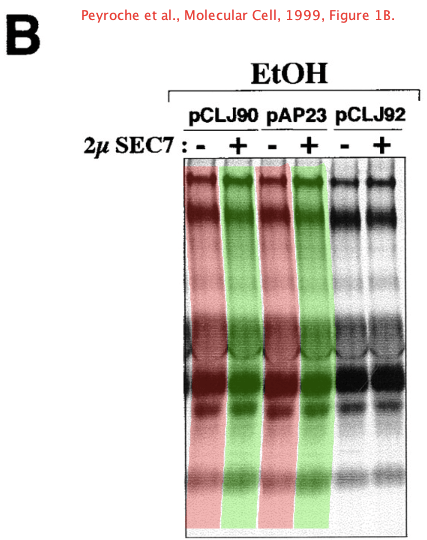
What do we see here, in Figure 1B, highlighted in colour? The first lane looks strangely similar to the lane 3, while the lane 2 might be identical to the lane 4. It is as if someone copy-pasted a set of bands, which must have been hard work in Photoshop because the lanes are not straight. Lots of fiddling. It would have been easier to do the experiment proper, but then again, the result would probably be different and not good enough for Molecular Cell anymore.
Fortunately for every fraudster in the world, Molecular Cell only corrects or retracts papers when corresponding author literally begs for it, fat chance with Peyroche or Jackson, which also explains why the retractions recommended by the Academy report did not happen.
At least, one old Peyroche paper from Jackson lab received an embarrassing correction in July 2019, in the society Journal of Cell Science. Not for the inappropriate gel splicing (which the Academy report classified as scientific misconduct Level I /II), the journal dropped that, but announced instead:
“During re-analysis of the original data for this paper, the authors found that images of several cells were spliced in Fig. 6A,B.”
That is not true, the data manipualtion in Figure 6 was revealed not by authors, but by the Academy investigation. The authors declare now in the correction notice of Peyroche et al 2001:

“We report in the main text the percentages of cells with different phenotypes for each of the conditions shown in Fig. 6, and present only one class of phenotype for each condition in the figure, making it clear that the cells shown are not representative of the entire population of cells when more than one phenotype is present (Fig. 6A,B, bottom panels). It would have been sufficient to show only one cell per condition (as we do for Fig. 6B, top panel), a frequent practice at the time. However, for Fig. 6A top panel and Fig. 6B, we chose 2–3 cells and grouped them together, a mode of presentation that can be found in other contemporaneous papers.…”
Translation: the immunofluorescence images are fake. We found some odd cells showing a bit of the signal we liked, and we assembled them into a collage in Photoshop, which we then presented as a representative microscopy field, and you muppets believed us. We won’t share the original files, and we might have rigged the signal intensity also, but nobody checked, so hahaha. For losers like you, this would call for a retraction, but Cathy and myself are so important and well-connected that we negotiated a correction, as we shall do with all our fraudulent papers. Up yours.
The Company of Biologists-published Journal of Cell Science are specialists in helping French elite data fakers. They also happily corrected papers by the former CNRS chief biologist Catherine Jessus, because it felt right to do so. He who is without a sin, shall retract the first paper. The Jessus investigative report was ghost-written by the Academy of Sciences member Frances-Andre Wollman, who declared his Sorbonne University colleague’s Photoshop antics to be good scientific practice. Noteworthy, also Wollman himself co-authored some papers with rigged data.
Afterwards, a Stalinist signature campaign organised by Academy and CNRS elites (including Fuchs) condemned every researcher NOT endorsing Jessus’ Photoshop data fakery as a literal Vichy Nazi collaborateur and traitor of France. I now understand why another former star scientist of CNRS, Olivier Voinnet, felt it so unfair being pillorised as fraudster and forced to retract 9 of his papers.
The following Peyroche paper was certified as containing Grade II research misconduct, and nobody bothered to correct it so far. Which is actually not too bad, since there is even more data manipulation in that paper.
Marie-Bénédicte Barrault , Nicolas Richet , Chloe Godard , Brice Murciano , Benoît Le Tallec , Erwann Rousseau , Pierre Legrand , Jean-Baptiste Charbonnier , Marie-Hélène Le Du , Raphaël Guérois , Françoise Ochsenbein , Anne Peyroche Dual functions of the Hsm3 protein in chaperoning and scaffolding regulatory particle subunits during the proteasome assembly Proceedings of the National Academy of Sciences (2012) doi: 10.1073/pnas.1116538109

This is Supplementary Figure 6, showing allegedly “Native gel comparing WT, hsm3ΔC(ΔC), and hsm3Δ(Δ) strains grown in minimal medium at 37 °C“. Only that the gel is obviously not that native, it is Photoshop-adulterated.
Sure, there is lots of vertical lane splicing, of the kind Academy report declared to be Grade I/II misconduct. But there is also horizontal splicing which happens when the author disagrees with the experimental result, removes part of the gel lane with the offending pattern of unexpected or non-existing bands, and replaces it it with a fictional version which makes the result publishable in an elite journal like PNAS. Basically, it is straightforward fraud and research misconduct of the highest Grade IV.
If Peyroche entire measly research output proves falsified in Photoshop, why is she being defended as a titan of proteosome research on whose shoulders the entire field built its scientific progress? The journalist Jouan had some revelations about Peyroche whitewashing in her relevant article in l’Express:
“Why then such kindness? Anne Peyroche can count on numerous and active supporters (including Yves Levy, former head of Inserm, and Alain Fuchs, former CEO of CNRS). And in this case, the highest authorities were informed of cheating, including the Elysee. In the summer of 2018, Yves Bréchet, former High Commissioner for Atomic Energy, had hand-delivered the fraud proving reports to the mathematician Thierry Coulhon, scientific advisor of Emmanuel Macron. Cédric Villani was also fully aware.
But the story does not end there. The CEA has just announced the retirement of its scientific integrity referent, Marc Léger. He is replaced by Jean-Marc Grognet, a pharmacist. This researcher is a very close friend of Peyroche (still on sick leave). From 2011 to 2014, he was director of the Institute of Biology and Technology of Saclay (iBiTec-S) of the CEA, a structure where justly officiated … Anne Peyroche. Thus, one of the criticised publications dates from 2012, when he was her supervisor. “When Grognet’s appointment was known to the CEA, nobody believed it. The device to protect cheaters is in place!” chokes an official.”
Now the irony is that one of the investigators who proved fraud in Peyroche papers, is the cancer researcher Jean-Marc Egly from INSERM and University of Strasbourg, who himself published shady research. Egly prevented a retraction of a fraudulent paper he co-authored with the notorious fraudster Maria Fousteri, but also his own lab has a case to answer. One example was mentioned in this article, but there is more:
All this appeared in papers with Egly as last author: Busso et al JBC 2000, Compe et al MCB 2005., Le May et al Cell 2004, Bradsher et al Molecular Cell 2002. In total there are presently 6 of his papers are flagged on PubPeer, in some cases Egly admitted data irregularities, which he sees as “mistakes”.
Now, there are two types of research misconduct investigations. Most are whitewashing campaigns, of the kind Jessus was part of (turned out, she even co-wrote her own report). The other kind is a proper misconduct investigation, where fraudulent scientists get slapped with a research misconduct verdict and sanctions. But almost always not too harsh, science is a place of tolerance and second chances. That was what Voinnet got, and he is present suing CNRS to overthrow the sanction because: Jessus wept, look what’s happening.
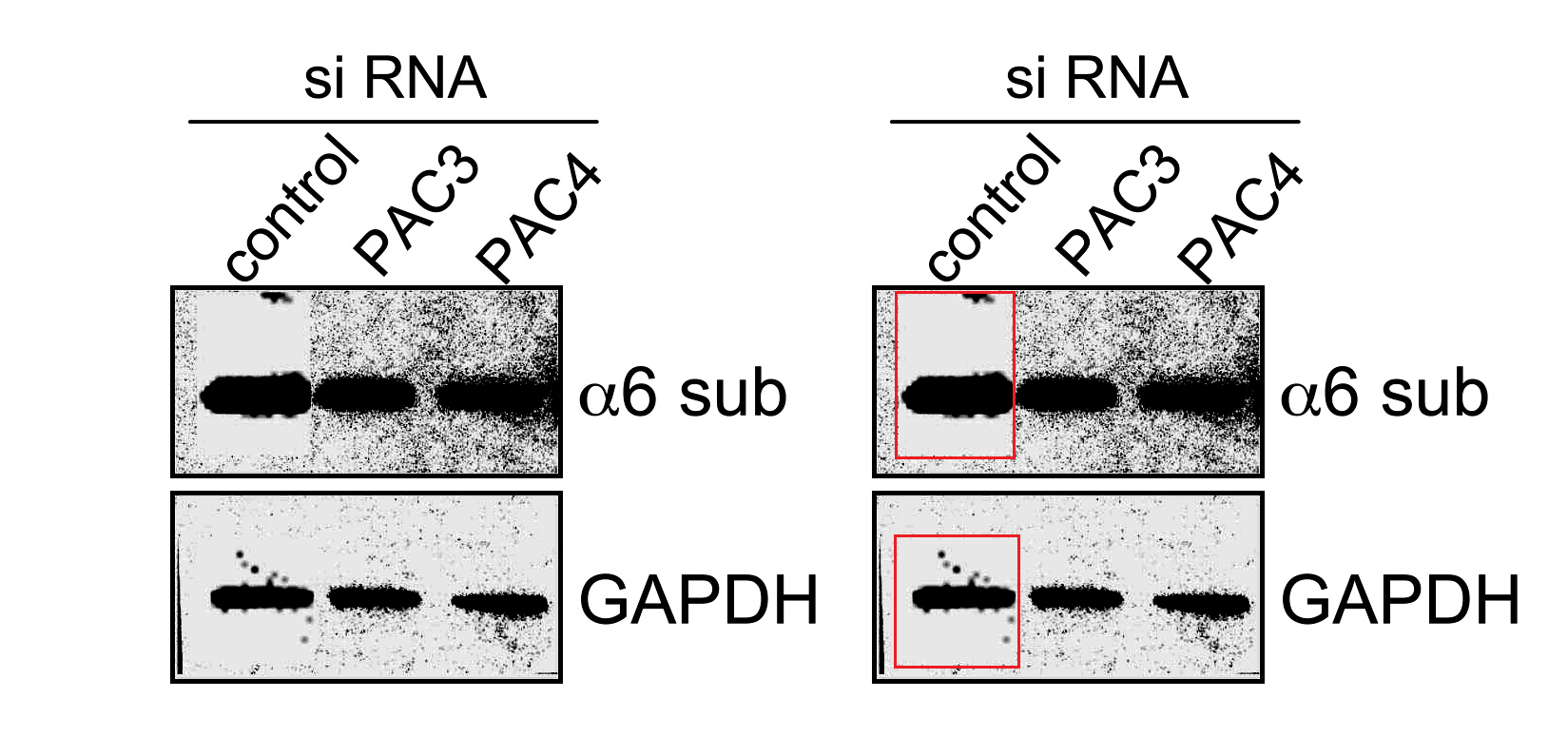
The Peyroche affair is an utter cock-up of a pig’s ear in a dog’s breakfast. What happened here can only be explained by the fact that even cheater scientists have their own concept of science ethics they are prepared to fight for. This is how it happened that a jury, which member was the Photoshop-bunk peddler Egly, found massive fraud in Peyroche papers instead of whitewashing her Jessus-style. Regardless of what CEA sings, Peyroche’s unimpressive academic CV does not fool anyone, and her rocket rise to the very top of power will sure have made many people like Egly very cross. Sure, they both published falsified data, but Egly has almost 250 papers on his CV, while Peyroche made it to CNRS president!
Hence, two warring French fractions collided in the Battle of Anne Peyroche. One fraction wanted to punish the jumped-up incompetent imposter for her research fraud, and the other fraction wanted to rescue a trusty associate in allegedly very bad health from a horribly unfair foreign conspiracy. The second fraction won now, having achieved a symbolic 2 week suspension for Peyroche, instead of a sack which everyone already counted on. But now everyone has embarrassed themselves, French academics tear at their hair not knowing whose orders to follow while the public points fingers and laughs.
Aux pipettes, citoyens.


Donate!
If you are interested to support my work, you can leave here a small tip of $5. Or several of small tips, just increase the amount as you like (2x=€10; 5x=€25). Your generous patronage of my journalism will be most appreciated!
€5.00



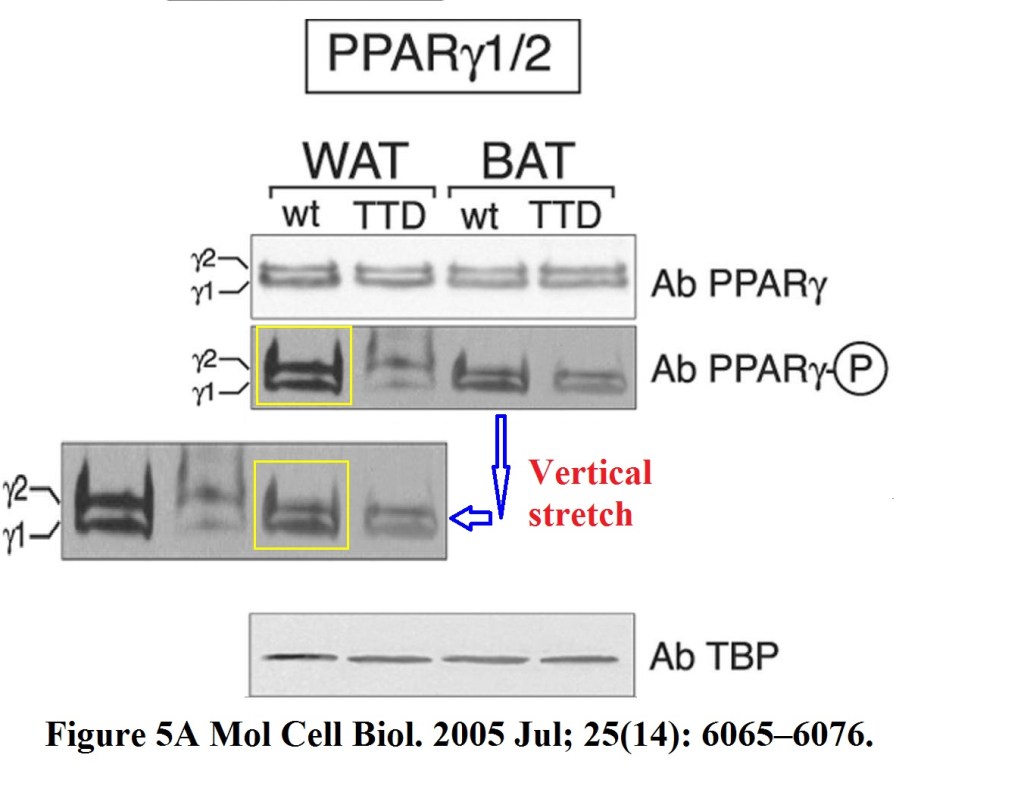

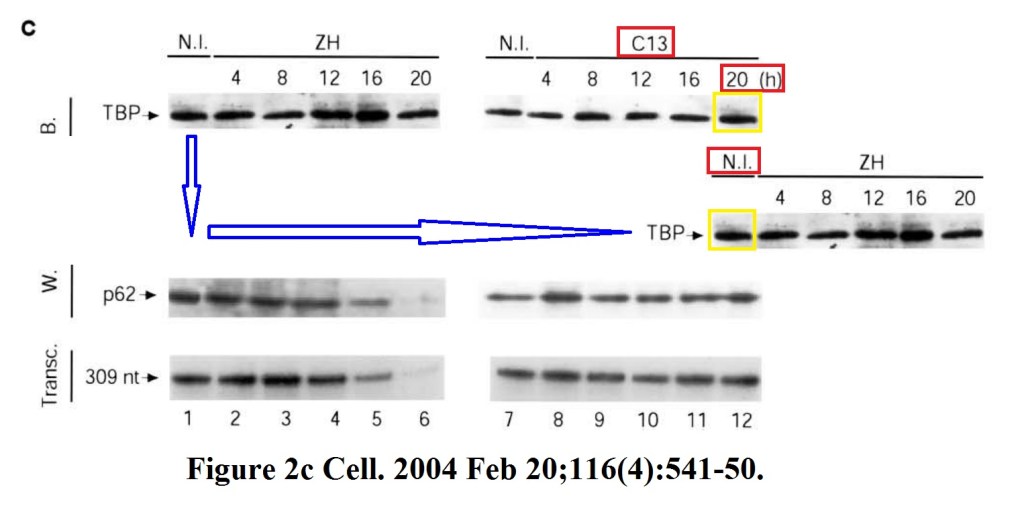
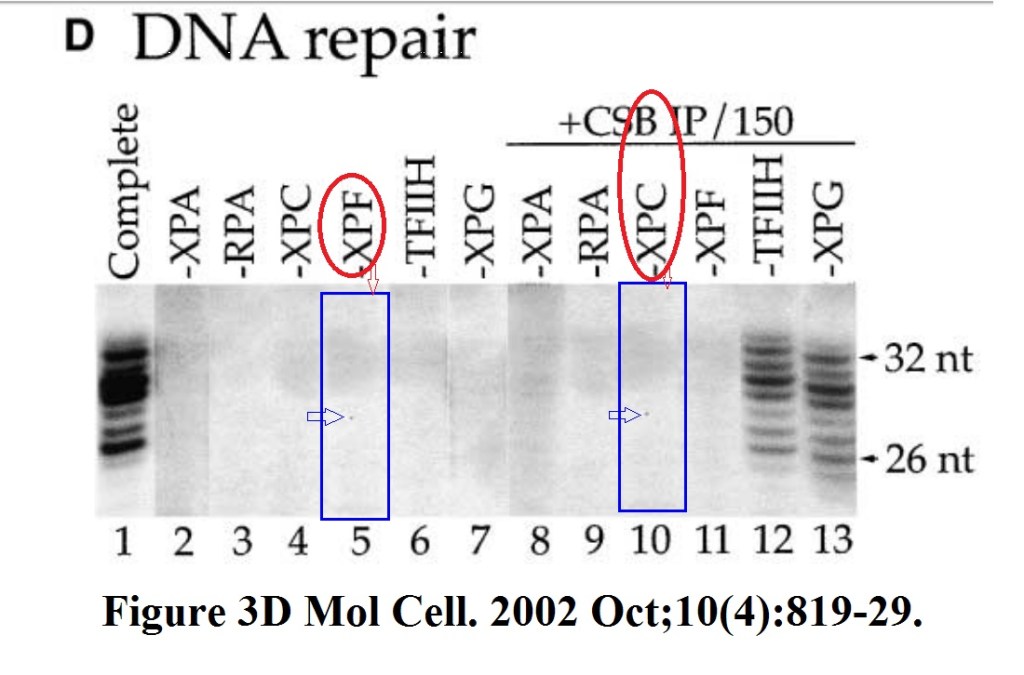
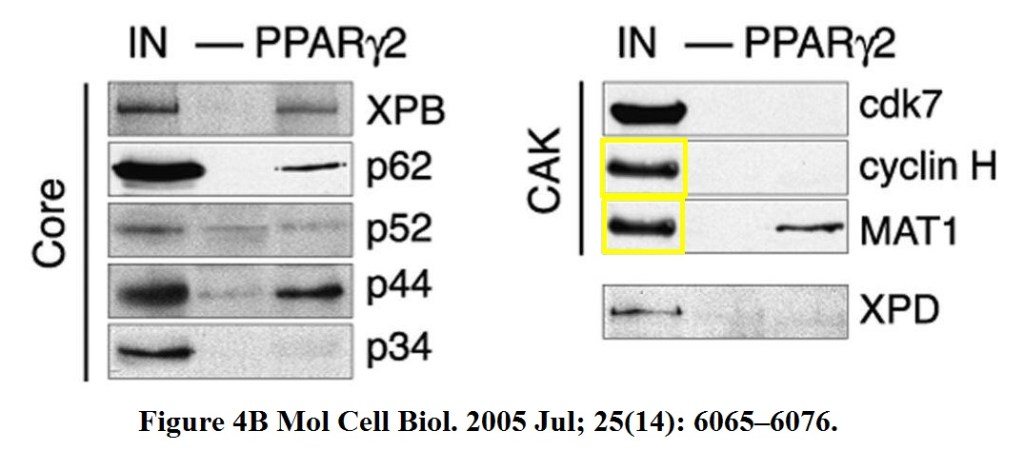

28 months into this, several reports, but @CNRS and @CEA_Officiel still couldn’t perform an in depth review of Peyroche’s 9 original research papers…
LikeLike
I went into science in part because I thought who you knew would not be important. Boy, was I ever wrong with that one. Peyroche probably knows the right people (who like her), and that will go very far. Maybe, on top of that, she never blinks her eyes like Elizabeth Holmes (a writer theorized that made Holmes more believable and likable).
My publication record is almost as shitty as hers, but I blink my eyes too much. And I dont look good in black turtlenecks sweaters (although it hides my pot belly somewhat).
LikeLike
Pingback: Remember Charles-Henri Lecellier? – For Better Science
“Now the irony is that one of the investigators who proved fraud in Peyroche papers, is the cancer researcher Jean-Marc Egly from INSERM and University of Strasbourg, who himself published shady research.”
J Biol Chem. 2001 Sep 14;276(37):35049-59. doi: 10.1074/jbc.M104988200. Epub 2001 Jul 6.
Oxidative stress induces neuronal death by recruiting a protease and phosphatase-gated mechanism
V Sée 1, J P Loeffler
Affiliation
1Université Louis Pasteur, Faculty of Medicine, E. A. Molecular Signaling and Neurodegeneration, 11 rue Humann, Strasbourg 67000, France.
PMID: 11443132
DOI: 10.1074/jbc.M104988200
Figure 3A. Much more similar than expected.
LikeLike
J Biol Chem. 2001 Sep 14;276(37):35049-59. doi: 10.1074/jbc.M104988200
Figure 3A continued.
LikeLike
J Biol Chem. 2001 Sep 14;276(37):35049-59. doi: 10.1074/jbc.M104988200
Figure 4B.
LikeLike
When journals identify flipping they should link it to this video by Swing Out Sister. We live in the electronic age. It should be possible.
LikeLike
J Biol Chem. 2001 Sep 14;276(37):35049-59. doi: 10.1074/jbc.M104988200
Figure 3A continued.
CaMKIVpanel. Semi-constant background, sometimes doing the splits. How to explain?
LikeLike
J Biol Chem. 2002 Jun 7;277(23):20979-90.
doi: 10.1074/jbc.M107948200. Epub 2002 Mar 4.
Amyloid precursor protein family-induced neuronal death is mediated by impairment of the neuroprotective calcium/calmodulin protein kinase IV-dependent signaling pathway
Corinne Mbebi 1 , Violaine Sée, Luc Mercken, Laurent Pradier, Ulrike Müller, Jean-Philippe Loeffler
Affiliation
Figures 7c and 8c.
Figure 8c.
Figure 7c.
LikeLike
J Cell Biol. 2004 Aug 30;166(5):661-72.
doi: 10.1083/jcb.200402136. Epub 2004 Aug 23.
Calcium-dependent regulation of the cell cycle via a novel MAPK–NF-kappaB pathway in Swiss 3T3 cells
Violaine Sée 1 , Nina K M Rajala, David G Spiller, Michael R H White
Affiliation
Figure 7A.
LikeLike
Additional problematic data J Cell Biol. 2004 Aug 30;166(5):661-72.
Figure 1C. Different number of lanes in CD1 and Cyclo A panels.
LikeLike
Some more pproblematic data J Cell Biol. 2004 Aug 30;166(5):661-72
Figure 1D. Much more similar than expected.
LikeLike
https://www.liverpool.ac.uk/systems-molecular-and-integrative-biology/staff/violaine-see/
“I completed my doctorate in molecular and cellular pharmacology in 2001 at the University Louis Pasteur (Strasbourg, France).”
“In 2005 I obtained a prestigious David Phillips Fellowship (BBSRC) to work on intracellular signalling dynamics at the University of Liverpool.”
LikeLike
EMBO J. 2007 Aug 8;26(15):3616-28.
doi: 10.1038/sj.emboj.7601789. Epub 2007 Jul 12.
HP1alpha guides neuronal fate by timing E2F-targeted genes silencing during terminal differentiation
Irina Panteleeva 1 , Stéphanie Boutillier, Violaine See, Dave G Spiller, Caroline Rouaux, Geneviève Almouzni, Delphine Bailly, Christèle Maison, Helen C Lai, Jean-Philippe Loeffler, Anne-Laurence Boutillier
Affiliation
Figure 3B.
Figure 3C.
Figure 7A.
LikeLike
Highly problematic data EMBO J . 2007 Aug 8;26(15):3616-28.
Figure 3C continued. Much more similar after horizontal flip than expected.
LikeLike
FASEB J. 2001 Jan;15(1):134-144.
doi: 10.1096/fj.00-0106com.
Calcium/calmodulin-dependent protein kinase type IV (CaMKIV) inhibits apoptosis induced by potassium deprivation in cerebellar granule neurons
V Sée 1 , A L Boutillier, H Bito, J P Loeffler
Affiliations
Affiliation
Figure 7A.
LikeLike
FASEB J. 2003 Nov;17(14):2091-3.
doi: 10.1096/fj.02-1182fje. Epub 2003 Sep 18.
Up-regulation of mitochondrial uncoupling protein 3 reveals an early muscular metabolic defect in amyotrophic lateral sclerosis
Luc Dupuis 1 , Franck di Scala, Frédérique Rene, Marc de Tapia, Hugues Oudart, Pierre-François Pradat, Vincent Meininger, Jean-Philippe Loeffler
Affiliations
Affiliation
Figure 3C.
LikeLike
J Neurosci. 2007 May 23;27(21):5535-45.
doi: 10.1523/JNEUROSCI.1139-07.2007.
Sodium valproate exerts neuroprotective effects in vivo through CREB-binding protein-dependent mechanisms but does not improve survival in an amyotrophic lateral sclerosis mouse model
Caroline Rouaux 1 , Irina Panteleeva, Frédérique René, Jose-Luis Gonzalez de Aguilar, Andoni Echaniz-Laguna, Luc Dupuis, Yannick Menger, Anne-Laurence Boutillier, Jean-Philippe Loeffler
Affiliation
Figure 1C.
LikeLike
Mol Cell Neurosci . 2001 Feb;17(2):342-53. doi: 10.1006/mcne.2000.0928.
Regulation of the retinoblastoma-dependent Mdm2 and E2F-1 signaling pathways during neuronal apoptosis
E Trinh 1, A L Boutillier, J P Loeffler
Affiliation
1
UMR 7519 CNRS-21, rue René Descartes, Strasbourg Cedex, 67 084, France.
PMID: 11178871 DOI: 10.1006/mcne.2000.0928
Problematic data figure 3A. Much more similar after horizontal flip than expected.
Problematic data figure 5A. Much more similar than expected.
LikeLike
J Neurosci. 2016 Apr 13; 36(15): 4351–4361.doi: 10.1523/JNEUROSCI.3239-15.2016
PMCID: PMC6601779
PMID: 27076430
Late-Life Environmental Enrichment Induces Acetylation Events and Nuclear Factor κB-Dependent Regulations in the Hippocampus of Aged Rats Showing Improved Plasticity and Learning
Romain Neidl,1,2,* Anne Schneider,1,2,* Olivier Bousiges,1,2,3 Monique Majchrzak,1,2 Alexandra Barbelivien,1,2 Anne Pereira de Vasconcelos,1,2 Kevin Dorgans,4 Frédéric Doussau,4 Jean-Philippe Loeffler,5 Jean-Christophe Cassel,1,2 and Anne-Laurence Boutilliercorresponding author1,2
Author information Article r
1Laboratoire de Neurosciences Cognitives et Adaptatives, Université de Strasbourg, F-67000 Strasbourg, France,
2Laboratoire de Neurosciences Cognitives et Adaptatives, Centre National de la Recherche Scientifique, UMR 7364, F-67000 Strasbourg, France,
3Hôpitaux Universitaires de Strasbourg, F-67000 Strasbourg, France,
4Institut des Neurosciences Cellulaires et Intégratives, Centre National de la Recherche Scientifique, Unité Propre de Recherche 3212, F-67084 Strasbourg, France, and
5Institut National de la Santé et de la Recherche Médicale U1118, Mécanismes centraux et périphériques de la neurodégénérescence, Université de Strasbourg, F-67085 Strasbourg, France
corresponding authorCorresponding author.
Correspondence should be addressed to Dr. Anne-Laurence Boutillier, Laboratoire de Neurosciences Cognitives et Adaptatives, UMR7364, Université de Strasbourg-CNRS, Faculté de Psychologie, 12 Rue Goethe, F-67000 Strasbourg, France., laurette@unistra.fr
Contributed by
Author contributions: R.N., F.D., J.-P.L., J.-C.C., and A.-L.B. designed research; R.N., A.S., O.B., M.M., A.B., A.P.d.V., K.D., and A.-L.B. performed research; R.N., A.S., M.M., A.B., and A.-L.B. analyzed data; R.N., A.S., and A.-L.B. wrote the paper.
*R.N. and A.S. contributed equally to this work.
Problematic data figure 2E. Much more similar than expected.
LikeLike
HDAC-3 participates in the repression of e2f-dependent gene transcription in primary differentiated neurons
Irina Panteleeva 1 , Caroline Rouaux, Yves Larmet, Stéphanie Boutillier, Jean-Philippe Loeffler, Anne-Laurence Boutillier
Affiliations Affiliation 1 Laboratoire de Signalisation Moleculaire et Neurodegenerescence, EA#3433,
Faculté de Médecine, 11 rue Humann, 67085 Strasbourg cedex, France.
PMID: 15659849 DOI: 10.1196/annals.1329.076
Problematic data figure 1. Much more similar and different than expected after 180 degree rotation.
Even Annals are supposed to be Annals of relaity.
LikeLike